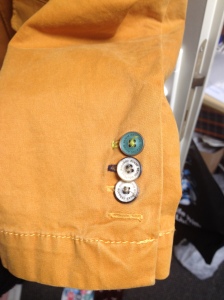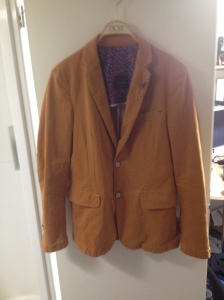Sustainability. Ethics. These words are constantly thrown about, brands are constantly being scrutinized on how ‘good or bad’ they are for the planet, both environment and people, and its particularly cheap fashion brands like Primark who are noticed more due to their extremely cheap prices. However, what about large High-street brands with rigorous systems in place to prevent exploitation, are they clean? NO! this article how multimillion pound companies can still get caught!
Are These Unethical Fashion Brands Hiding In Your Closet?
So I thought id dive into my own wardrobe and see what I would uncover about my clothes…..
…and I chose my favorite mustard blazer from Zara.
As soon as you look at it you are immediately drawn to its overly flamboyant coloring then when the details emerge it becomes ever more interesting and unique….
This subtle detail, alternative buttons and stitching to makes it ever more interesting!! however need to look at its heritage upon getting into my possession.
This garment was made in morocco, one of the 2 main producers of garments for the brand (The Atlantic). Instantly shipping costs come into the equation of environmental damages (however not as damaging as the distance of china).

But to look specifically look at the garment itself, specifically the intense colour. “during the dyeing process an average t-shirt will use 16-20 litres of water. 80% of the dye is retained by the fabric and the rest is flushed out… the global textile industry discharges 40,000 – 50,000 tons of dye into the water system” (Ethics Fashion) This tremendous amount of water wastage is why “textiles leave one of the largest water footprints on the planet and dyeing poses an especially big problem” (The Gaurdian) and with much of this water being dumped into local water supplies wildlife and human quality of life.
With modern ways of dyeing fabric with a massively reduced water wastage leaves no reason to stand to why the traditional method is used. US company ‘Airdye’ which instead of using water using air to disperse the die, which allows the colour to last longer against water and chemicals. (The Gaurdian)
To conclude without knowing specifically how environmentally friendly my specific jacket is, you still know the damage done. In one way or another my jacket was dyed with a really bright coloring which would have resulted with some adverse affect, which leads me back to my original question…. how bothered am I, although the figures sound bad environmentally, is my style more important to me? how many other thousands of people are in this dilemma of morality?
Derek Thompson. (2012). Zara’s Big Idea: What the World’s Top Fashion Retailer Tells Us About Innovation. Available: http://www.theatlantic.com/business/archive/2012/11/zaras-big-idea-what-the-worlds-top-fashion-retailer-tells-us-about-innovation/265126/
Etical Fashion Forums. (n/a). Ethical Fashion Forums. Available: http://www.ethicalfashionforum.com/the-issues/dyes
Leon Kaye. (2013). Clothing to dye for: the textile sector must confront water risks . Available: http://www.theguardian.com/sustainable-business/dyeing-textile-sector-water-risks-adidas.
